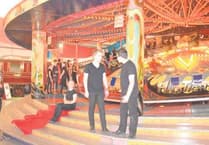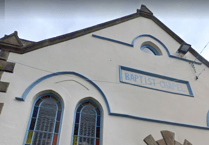A NOTABLE entrepreneur who was born in Okehampton and thought to have lived the first years of his life there has been honoured by having a new bridge in Bristol named after him.
Brock’s Bridge, which has been constructed as part of of a bigger project to build a £92.5-million arena in Bristol, has been named after William Brock. A competition was held by the Homes and Communities Agency, Bristol Council and the Bristol Post to name the bridge.
Born in Okehampton in 1830, according to the 1841 and 1851 census he lived in Mill Lane, though it is unclear whether this equates to Mill Road in Okehampton or Mill Lane in North Tawton.
At some point between 1851 and 1857 William and his parents moved first to Bath and then Bristol, where he stayed for the rest of his life. He set up Temple Meads Steam Joinery Works, a factory neighbouring Bristol Temple Meads rail station. He employed 250 people, designing and building much of the machinery he used himself.
As a former scholar of the Sunday school at what was the Okehampton Ebenezer Chapel now Ebenezer Hall Mr Brock made a donation of new windows in the 1860s when the chapel underwent major renovation work.
Mr Brock was also involved in the construction of St Philip’s Bridge, the Bristol Bridge and Bedminster Bridge. He also built stations at Taunton and Weston-Super-Mare.
The name was put forward by the Totterdown and Knowle Local History Society. The society has worked closely with Mr Brock’s great-great granddaughters Jan and Shirley Packer on the submission.
In their submission the history society wrote: ‘His story revolves around the small area where the new arena will stand. We feel that naming the new bridge after him, will both bring him worthy recognition and act as an appropriate link to highlight Bristol’s track record in innovation and talent.
‘Just as people come to Bristol today to seek and contribute to the development of our city, he too brought his family looking for the opportunities and advantages that industrial expansion was bringing. He started his business under the arches of Brunel’s station, close to where the Engine Shed stands today.’



